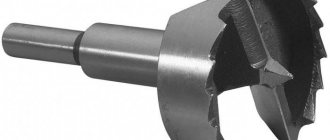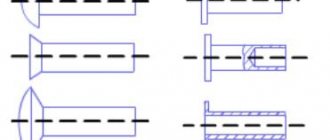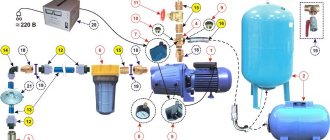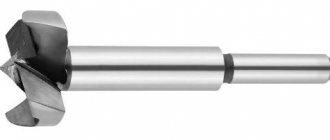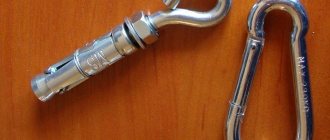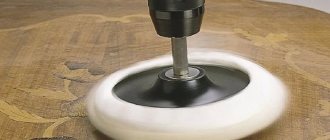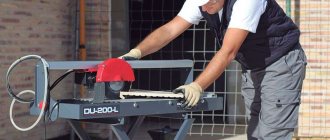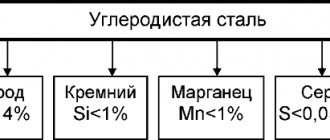In home workshops, flexible shafts for electric drills are used less often than other tools. However, when you need to make holes or tighten screws in areas inaccessible to an electric drill, then in these cases such a tool, or rather, a mechanism, is indispensable. In addition, it is convenient to use even in an open place where holes are supposed to be made.
For example, if there is a need to drill holes under the ceiling, then it will be much more convenient to use just such a device. After all, it weighs less than any electric drill or even a screwdriver, so such a shaft is much more convenient to use. In addition, the flexible shaft, in addition to electric drills, can be used in combination with engravers or drills.
Homemade engraver with flexible shaft
In a home workshop, cases periodically arise when, during the manufacture of a part, it becomes necessary to process or modify a surface that cannot be reached with universal equipment. So the part may turn out to be bulky, fragile or not rigid, there is no way to secure the part or the surfaces need to be modified in place.
For this case, a hand-held device with a flexible shaft and mechanical rotation of the cutting tool is used. The device is called differently - an engraver with a flexible shaft, a mini-drill, a drill, etc.
This is a device that looks like a fountain pen, with a rotating, replaceable processing tool connected by a flexible shaft to an external electric drive. A hand engraver, used in conjunction with a flexible shaft, allows you to process hard-to-reach places on any product.
This device is universal because, using a set of various tools, it can be used to mill, grind, polish, engrave and cut material, drill small-diameter holes, and clean surfaces. By equipping the device with an appropriate working attachment, you can successfully use it for working on ferrous and non-ferrous metals, wood, bone, stone, glass, ceramics, plastics and other materials.
Although it is not difficult to purchase such a device on the modern market, many people act differently and make an engraver with their own hands. A homemade device will be inexpensive and will not cause any special problems during manufacture. Despite the simplicity of the design, a homemade engraver allows you to successfully perform the same operations as a serial model engraver.
To make a simple yet easy to use functional engraver, you will need some components. — Flexible shaft (located on the farm or purchased). — Working attachment (research or manufacturing). — Two ball bearings with a diameter of 22 x 8 mm. — Engraver drive. — A set of tools with which processing will be performed. For a homemade working attachment, any tool with a shank diameter from 1 to 3.5 mm is suitable.
However, as a flexible shaft for the engraver, it is possible to use the drive shaft from a drill or the shaft for the speedometer of a car or motorcycle. We use this option for our homemade product.
Due to the flexible shaft, the device has an advantage. There is no unnecessary strain on your hands during operation of the device. This is due to the fact that the shaft head is several times lighter than a power tool with a built-in drive.
Making a working attachment
The threaded part of the housing is designed to connect it to the used flexible speedometer shaft and corresponds to it in thread. In our case, it is M18x1.5 with a length of 10 mm. The 70 mm long body is bored out for two ball bearings with a diameter of 22 x 8 mm. As a drive shaft with a collet clamp, which will be installed in the housing, we use a double-sided hand tool with replaceable collets, which is sometimes used for drilling holes in boards. It's time to mechanize this tool.
For the width of the bearing, to ensure a tight fit, we clean the corrugations from the edges of the tube. We press the bearing on one side. To fix the shaft when clamping a cutting tool in a collet, select a sleeve of suitable dimensions, install it in the middle of the tube and secure it with a pin. We drill a 3.5 mm through hole through the installed bushing, in diameter, to install a stopper when clamping.
On one side (instead of a collet), we screw a piece of copper tube with a diameter of 6 mm into the threaded hole of the tool tube. To do this, at one end we first cut an M6 thread, and carefully compress the other end until the square fits tightly at the output end of the flexible speedometer shaft. As a result, the total length of the drive shaft must match the length of the housing.
We measure the distance from the front end of the tube to the hole for the stopper. We install the assembled shaft into the housing, all the way to the rear wall. Mark the location of the locking hole on the body. We remove the drive shaft and drill a locking hole in the housing. After lubricating the bearings, we assemble the working attachment. Check the alignment of the holes for the stopper. If the bearings are unprotected, cut out and install, on the collet side, a protective washer made of plastic or felt.
After the working nozzle body is completely assembled, the open end of the drive shaft should coincide with the end of the body, and the crimped end of the copper tube should be flush with the threaded end.
Install the collet of the required size.
We attach the flexible shaft to the body.
To secure the cutting tool
We use a drift as a stopper.
Tool
The following tools are used to transform a compact engraving device into a multifunctional processing device: - drills, with the help of which the engraver turns into a mini-drill; — milling cutters of various designs, allowing processing of flat and shaped surfaces, as well as holes, grooves and recesses of various configurations; — disk tools used to perform cutting operations on materials of small thickness; — metal brushes, which are used to clean the treated surfaces from traces of corrosion and other contaminants; — abrasive tools with working heads of round, semicircular, oval and cylindrical shapes, used for grinding and polishing surfaces; — tools with a conical working head for applying inscriptions and patterns to the surface of the workpiece; — tools, the working head of which is made of felt, for performing polishing operations.
Sufficiently high-quality cutters for engraving machines can be made from broken drills, if you give their working part the required configuration using a regular sharpening machine.
Device drive
A drive electric motor, which can be used as any motor powered by an electric current of 220 volts. This could be the motor from a washing machine or other household appliance that you do not use.
An electric motor from a sewing machine is optimal for a homemade engraver, since it is possible to regulate the shaft rotation speed within a fairly wide range. Such motors, as a rule, are capable of shaft rotation speeds of up to 6 thousand rpm, which is quite enough for a household engraver. It is better to work with soft materials at slow speeds, since a high rotation speed will lead to overheating of the tool or melting of the edges of the workpiece. It is recommended to work with metal at medium speed. It is best to process hard natural stone at maximum speed.
Material of manufacture and shape of nozzles
The design and material of drill attachments depends on the type of technological operations in which they are used. For cleaning and roughening surfaces, various types of brush attachments are used, and for preliminary grinding, flat or flap attachments based on coarse sandpaper are used. For fine grinding and polishing, fine-grained abrasives or non-woven materials are used. In the latter case, they are often used with grinding and polishing pastes and aerosols. When grinding requires the removal of a thick layer of material, including unevenly, various types of cutters made of hard abrasives based on aluminum and silicon compounds are used.
Disc and fan nozzles
Flap wheels are also used as attachments for drills. They consist of many identical strips of sanding paper, fixed at one end to the axis of rotation, resulting in the formation of a dense circular brush of abrasive lamellas. Due to their external similarity, such attachments are commonly called fan attachments.
End bits
Abrasive end attachments for drills are one of the types of cutters - a metalworking tool that is used for manual grinding of profile surfaces, widening holes and removing excess metal in hard-to-reach places. This cutter is a cylindrical shank with an abrasive head pressed onto the front end of it. And the name “end” is due to the fact that processing with such a tool is most often performed in a perpendicular direction. End attachments are available with a wide variety of heads: round, conical, cylindrical, parabolic, etc. Therefore, you can always choose a cutter whose geometry best matches the profile being processed. The material used for abrasive heads is various types of high-hardness sandstone. In a fixed drill, cylindrical cutters can be used to sharpen metalworking tools.
Why do you need a flexible shaft and where is it used?
Using a flexible shaft is very convenient when you need to tighten or unscrew fasteners in narrow places with difficult access, where you cannot insert a screwdriver in the working position
Flexible shafts are also used to drive hand tools for fine and precise work. Placing a heavy, high-speed electric motor in the tool itself would lead to rapid operator fatigue and loss of precision in operations. An example is a dentist's or engraver's drill.
As a result, the user gets the opportunity to work for a long time with a comfortable, light and small-sized device, and the level of vibration from the electric motor transmitted to the hand is reduced.
Flexible shaft for screwdriver
A feature of the use of a flexible shaft is the limitation of the maximum torque that it is capable of transmitting. If this limit is exceeded, the cable becomes twisted and the shaft fails.
Selection instructions
The selection of a nozzle includes a determination with several parameters:
1. The maximum size of hardware that this model can twist. Depends on the torque that the cartridge is able to transmit. There is a table that will help with the choice (the data describes the possibilities of working with medium-strength steel)
| Hardware diameter, mm | Torque, Nm |
| 8 | 12 |
| 12 | 20 |
| 16 | 30 |
| 21 | 60 |
| 50 | 180 |
2. Method of connecting the working bit to the chuck. Magnetic gripper and three-jaw collet chuck. The first option is more practical, but less reliable. The second provides the most durable grip.
There are different companies on the market, with significant differences in price and quality. Inexpensive, accessible attachments from China and Taiwan are designed for the picky user. At rotation speeds greater than 300 rpm. they begin to vibrate and heat up. Magnetic fasteners are only suitable for single-sided bits. After a short period of use, the nozzles begin to run out radially, which negatively affects their performance.
AEG and Dewalt produce more reliable bits with acceptable torque values and a strong connection for the bit. They are designed to operate at 400-600 rpm.
Professional equipment from the USA from Milwaukee is aimed at the fastidious consumer. Huge rotation speed of 1600-1800 rpm, combined with the ability to drill.
An angled screwdriver attachment helps make repair work, furniture assembly, hanging pictures on the wall, and other everyday tasks easier. The main thing is to correctly determine what is required from the tool. Then choose the right model without overpaying for unnecessary features and follow the instructions.
Design Features
The main design feature and at the same time the main advantage in application is the ability to bend it anywhere in any direction. This is achieved by using the following components:
The outside of the wire is covered with a corrugated plastic sheath, inside of which there is a grease. It reduces friction, prevents abrasion of the core cable and protects it from moisture and dust.
The design of the flexible drill drive also includes bearings to which the cable is attached. They keep it spinning. At one end the cable is fixed in a socket, at the other it is provided with a mount for a tool.
Extension shaft with collet clamp
Such a drive is intended for light and delicate work; you should not count on using it to unscrew a soured bolt or screw in a 130 mm self-tapping screw at full speed; you must remember that the torque transmitted by the flexible shaft is limited.
Conditions for successful operation of the structure
Bearing operation
If the bearing is correctly selected for the load and all landing conditions are met, long-term operation is guaranteed, since by standard all bearings are designed to operate up to 5 million revolutions. The standard also provides for the permitted bearing heating temperature. The heating temperature during operation should not exceed 35°C in front of the environment, the maximum heating should not exceed 80°C.
Work of the entire assembly
In industrial versions of the vibrator manufacturing, protection is provided by the design; in home-made ones, when the hammer drill chuck is rigidly connected to the drive, the entire load falls on the gearbox and the protection provided in the drills may be triggered (slippage of the protective clutches - ratchets, or power failure). Therefore, it is best to start with minimal resistance of the drive cable, positioning it strictly in a straight line.
How to make it yourself
Those who like to make tools with their own hands can easily make a flexible drive for a drill on their own.
Important! You won’t be able to make armor braiding yourself; this requires industrial equipment. It is also important to understand that a homemade flexible shaft for a drill will be inferior to a factory one, first of all, in terms of working life. And it’s better to use it occasionally - then it won’t let you down at a crucial moment. For professional work in large volumes, it is better to invest in a purchased extension cord.
As an option, you can take a cable from a car speedometer, as well as a motorcycle gas or clutch control drive as a starting material.
Tips for use
- Before you start using a screwdriver, you should choose the right attachment. It must correspond to the type of work and be suitable in diameter to the head of the fasteners.
- To insert a bit into a tool equipped with a quick-release chuck, it should be pushed between the “cams”, carefully turning the sleeve in a clockwise direction. If the screwdriver design has a key chuck, then the bit is installed in a special socket and turned with a key until it is completely locked in a clockwise direction. After the selected bit is set, the device can be connected to the network and immediate work can begin.
- To reduce or, conversely, increase the speed of rotation of the nozzle, you need to weaken or strengthen the pressure on the start button.
- When the fastener is tightened, the limit sensor will automatically operate and the device will stop operating.
- When unscrewing a screw, the bit must be placed in the slot, and the rotation of the bit must first be adjusted to work in the opposite direction.
- If during operation it is necessary to remove or change the nozzle, you must first turn on the reverse mode. When the bit has rotated in the opposite direction, the ring holding it is squeezed with your hand, and the nozzle is easily removed and replaced with another one.
Flexible shaft for engraver
The engraver, or drill, develops high speeds - up to 30 thousand rpm. The device is small-sized and fits comfortably in the hand and is used for operations:
Working as an engraver requires high precision of the master's movements. The effort involved is small, compared to, say, tightening self-tapping screws. The torque is also low. Such devices are used by jewelers and artists who create works that are not inferior to the best examples of wood, stone, and embossing carvers. Engraving is performed on materials such as:
Flexible Shaft Engraver
The flexible shaft for the engraver allows the user's manual efforts to be reduced to a minimum, turning many hours of work into an exciting activity.
How to choose an adapter?
Battery-powered screwdrivers are the most common device in construction. Its main “advantage” is mobility. Depending on the screwdriver model, the battery receives voltage from 14 to 21 volts. The “output” is from 12 to 18 volts
When choosing an angled adapter for a screwdriver for an 18-volt socket head, pay attention to the following recommendations:
- nozzles (steel P6 and P12) are suitable for working with metal screws;
- available models, as a rule, use a trib made of modern plastic;
- the adapter is light in weight, but the torque is limited to 10 nm;
- a steel gearbox is capable of increasing torque up to 50 nm;
- the larger the size of the bit extension, the higher the performance of the screwdriver;
- the possibility of “reverse” expands the functionality of the device (we not only tighten, but also unscrew the screws).
When selecting an adapter, we look at the maximum screw size and adapter model, as well as the method of connecting the bit to the chuck. The magnetic grip is practical, but the three-jaw chuck will provide maximum grip strength.
Today, the modern market is saturated with different models of adapters for screwdrivers; they differ in quality and price. In most cases, inexpensive Chinese nozzles with a rotation speed of 300 rpm quickly heat up and vibrate. Magnetic mounts are suitable for single-sided bits.
Shafts for lawn mowers
Mechanical scythes with electric and gasoline drives use both flexible and rigid shafts.
Powerful brush cutters, capable of cutting tall, hard and dense grass and even small bushes, use all-metal rigid drives. Such devices are designed for long-term operation and have high torque. They are also large in size and weight and are worn on shoulder straps. The working tool is thick, rigid fishing line or powerful steel knives - two, three or four - bladed.
Adapter Types
The angle adapter for screwdriver is divided into two types: flexible and rigid.
Features of the first type include:
- the ability to penetrate the most inaccessible places;
- unscrewing tightly seated screws;
- widespread use in everyday life;
- not suitable for tightening metal screws.
A rigid adapter differs from a flexible one in the following characteristics:
- durable cartridge;
- suitable for professional activities;
- torque: 40-50 Nm.
The structure of these types varies significantly. The flexible one has a metal body, a bit gripper on a magnet, and a flexible shaft. The rigid adapter is made of steel, there are two types of grip, magnetic and cam, there is a bearing.
Speedometer flexible shaft
The flexible shaft transmits torque from the car or motorcycle transmission to the magnetic speedometer sensor. If the speedometer needle, when driving at a constant speed, begins to twitch or goes to the extreme position, it means the cable is faulty. You can replace it yourself. The flexible shaft is selected according to the parts catalog for your car brand. It must match in terms of attachment points and length. If the cable is too long or too short, there is a risk of bending it at too small a radius. This leads to extraneous noise (similar to howling), increased wear and premature failure of the unit.
Source
Information for fishermen
The angle adapter for a screwdriver is designed not only for tightening screws and self-tapping screws, but is also widely used by fishermen. An ice ax adapter for a screwdriver helps in drilling holes.
Using an attachment that allows you to rotate the ice ax with a screwdriver gives the fishing enthusiast the following advantages:
- simple ice drilling;
- a sufficient number of holes in a short period of time;
- when the screwdriver is discharged, the ice ax can be operated manually;
- slight noise;
- The adapter for an ice ax to a screwdriver is compact and convenient.
The main purpose of the device is to transfer rotations from an electrical device to an ice ax. Most modern adapters are equipped with a special handle for securely holding the tool. Adapters have different designs, the simplest one is a sleeve made of metal. With a more complicated design, the adapter is attached at one end to the auger part of the drill, and at the other to the chuck.
Installing an adapter for an ice ax under a screwdriver is not difficult:
- unscrew the bolt that connects both parts of the drill;
- We mount an adapter in place of the “top” of the drill;
- The hex shank is fixed into the screwdriver chuck.
Some disadvantages of adapters for ice axes for screwdrivers are still present. For long and productive operation of the tool, a powerful charge is required. As a rule, 18-volt screwdrivers with a torque of up to 70 nm are used to drill ice. Unfortunately, not all batteries work properly at low temperatures. It is necessary to take care of additional batteries, which should be kept warm. Fishermen need a more powerful tool, which costs a lot.
The way out of the situation is to use an adapter with a gearbox (a set of gears located in the crankcase is designed to adjust the speed of rotation of the shafts). This element will allow you to use an inexpensive screwdriver for the drilling process. The gearbox will take on part of the load from the chuck and the tool mechanism, and will also help save battery power on the device.
To learn how to make an ice drill adapter for a screwdriver, see the following video.
Let's block ads! (Why?)
Features of using a flexible shaft for an engraver, drill and screwdriver
A flexible shaft, the main purpose of which is to transmit torque over a considerable distance, is most often used to equip engravers. This type of equipment, which is essentially a miniature grinding machine, is actively used for processing small-sized parts. In particular, the engraver is used as a mini-drill; it is used to perform miniature cutting, selective grinding of small elements of products and a whole list of other works.
The flexible shaft simplifies the use of the engraver, eliminating the need to hold the tool above the work site
The most common areas where flexible shaft engravers are used are the jewelry and electronics industries. Such equipment is actively used by design specialists, employees of car repair stations and workshops involved in the repair of household appliances and electronic equipment.
An electric engraver, on which a flexible drive is installed, is especially relevant in situations where processing must be performed in hard-to-reach areas of the product. Using replaceable attachments, such equipment can be used in all stages of processing, from roughing to finishing.
Flexible engraver shaft with protective springs at the ends that protect the rubber casing from damage
Grinding and polishing
A huge number of attachments intended for polishing, stripping, and grinding the surface should be placed in a separate group. With their help, you can not only remove paint or unevenness from metal or wood, but even remove a few millimeters of the material, increase its strength characteristics, and much more! Let's look at some of them.
- Grinding attachment for drill. Intended for removing rust on metal, eliminating visible product defects, sharpening steel cuts and many other functions. Drill attachments for grinding are rods on which abrasive attachments are located. When the chuck rotates, it accelerates to the same speed and is used as a grinding wheel. The abrasive can have different grain sizes.
- Drill attachment for sanding wood. A similar item as for metal processing, only instead of an abrasive, a polyurethane, rubber, mineral (etc.) circle is installed, with which you can make the surface extremely smooth and without chips or needles.
- Drill attachment for polishing. This is a specific tool, the base of which is made of rubber and foam rubber; an emery wheel can be attached to them. This design ensures maximum processing quality. No worse than a polishing machine. The only drawback is that the drill is much heavier, so holding it will be a little awkward.
- Grinding "sun". Another unusual nozzle. It is a circle from which strips of sandpaper emerge like rays. When the chuck rotates, the paper blades accelerate to high speed and polish any metal in a few seconds! The attachment is short-lived, lasts only a couple of hours, but is very effective!
We reviewed the most useful attachments. Now the choice is yours: use these devices or buy expensive devices.
What operations are performed using an engraver with a flexible drive?
Special attachments help turn an engraver with a flexible shaft installed on it into a truly universal device, which include:
To ensure ease of operation with such a device equipped with a flexible drive shaft, you can purchase additional accessories - rubber grips on the handle, a power button lock, etc.
All kinds of holders are very useful, in which, in addition to the shaft and the engraver, you can attach various attachments
Engravers on which a flexible drive shaft is installed also include a drill used in dentistry, a manicure machine, equipment for processing natural stone and applying inscriptions and drawings to the surface of products made from it.
You can also use a flexible shaft for a drill or purchase a flexible shaft for a screwdriver. With this improvement to conventional power tools, a screwdriver attachment or drill can be successfully used to perform work even in the most difficult to reach places.
Bracket for receiving drilling machine
The multifunctional bracket will help you convert a standard hand drill (corded, with battery) into a stationary drilling machine. The body is made of heavy-duty aluminum alloy. Massive, allows you to securely install the drill for subsequent drilling. The fasteners are designed in such a way that they are suitable for all modern power tools.
The sole is equipped with a vice, which allows you to fix the workpieces in the desired position and avoid their displacement while drilling holes. The adjustable bracket allows you to set the desired height, taking into account the size of the tool itself. For convenient operation, there is a handle with a rubber pad that smoothly lowers the drill.
Multifunctional bracket for drill and screwdriver
| Price | 2,077.21 - 2,345.32 rub. |
| Rating | 4,6 |
| Reviews | 115 |
| Orders | 188 |
| Delivery to Russia | Free |
How does the engraver work and how does it work?
The engraver, which allows you to process parts with high precision and productivity, works on the principle of a conventional drill, and in appearance it is very similar to a large automatic pen. The main structural elements of such a device are:
Rotation from the engine is transmitted to the axis of the flexible shaft, the reverse side of which is connected to the working nozzle. The mounting locations of the nozzles are unified, so there are no problems with choosing the required tool and replacing it.
Purpose and main parameters
A lathe chuck is one of the main elements of technical equipment and is necessary for reliable fastening of workpieces of various sizes and shapes to the spindle. High clamping accuracy ensures centering and perpendicularity of the surface of the processing axis. The chuck is necessary for almost all turning operations; it is included in the mandatory set of equipment for metalworking manual, semi-automatic and automatic machines.
This type of clamp is installed on the headstock of the machine. The transmission of rotation is carried out from the electric motor through the gearbox and transfer case. To ensure the production of parts, several lathe chucks are needed, which are selected taking into account the main operational and technical parameters:
- Design option and number of cams (clamping elements) - determines the possibility of fixing a particular type of workpiece, the location of the cams, and the possibility of installing several workpieces.
- Working diameter of the cartridge. This is the outer size, the diameter of the connecting belt, as well as the location and parameters of the mounting holes.
- Workpiece parameters. It is necessary to take into account the largest and smallest diameters, take into account the method of fastening - external or internal through reverse cams. It is also necessary to take into account the permissible mass of the part.
- The diameter of the hole in the cartridge body. Necessary when processing long rods.
- Maximum value of rotation speed.
Equipment selection criteria
When choosing an engraver, you should focus on a number of characteristics.
Based on the power level of the device, on which its performance directly depends, one can indirectly judge the operating life of the drive motor. The power of the engraver, which for serial models can be in the range of 35–300 W, should be selected based on the tasks for which it is planned to use such equipment. In addition, you need to consider how long it will work between turning on and off. The duration of the operating process depends on the hardness of the material from which the product being processed is made. The longer the engraver is used at one time, the more power it should have.
Low-power compact engraver is convenient for simple work without a flexible drive
The speed at which the motor shaft and the flexible drive shaft attached to it rotate is also selected depending on the hardness of the materials to be processed by the engraver. Models offered on the modern market can provide tool rotation speeds in the range of 10–35 thousand rpm. Low-speed models can be purchased if they will be used primarily for finishing grinding and polishing. When performing such operations, a small load is placed on the tool, so the engraver itself does not overheat, and therefore does not fail.
If you need a more universal device with a flexible shaft, it is better to give preference to engravers that provide the ability to adjust the rotation speed of the tool.
The speed controller significantly increases the functionality of the engraver
The weight and dimensions of the engraver influence how convenient and easy it will be to manipulate such a device during processing with its help. Engravers that have significant dimensions and weight are much more difficult to work with, but such devices, as a rule, have higher power and productivity. The weight of an engraver with a flexible drive shaft can be in the range of 0.5–8.5 kg. When choosing such a device, first of all take into account the required power and functionality, and only then pay attention to the weight and dimensions.
Since an engraver works by constantly holding such a device in his hands, its ergonomics, which characterizes the ease of working with the equipment, is an important factor when choosing. When assessing the ergonomics of a device, you should pay attention not only to its design, but also to the build quality, manufacturing materials, button placement and comfortable handle design.
Before purchasing a tool, you should hold the engraver in your hands and try out the buttons and latches.
These parameters are not indicated in the equipment passport. It is advisable to pay attention to them if the engraver will be used quite often. To evaluate how much noise and vibration the device makes during operation, you just need to turn it on and evaluate these parameters. As a rule, medium-power engravers make more noise, and in more high-speed equipment this problem is provided for by the manufacturers and is eliminated by including special elements in the design. You can only estimate how hot an engraver equipped with a flexible drive shaft gets during operation.
Choosing the cost of the device and manufacturer
The list of well-known manufacturers who are responsible to the consumer for all their products looks like this: Bosch, Bort, Stayer, Gardenlux, Makita, FIT, Dremel, Prorab, Sturm, DeWalt, Vityaz. As for the differences in prices, there is a wide range. Simple, low-functional devices are purchased for the equivalent of 15–20 dollars, and for high-power devices with a varied number of processes you will have to pay about 1 thousand dollars.
For some novice professionals and hobbyists, the cost of the device and brand recognition play a purely symbolic meaning; it is much more important if the device exactly matches the job for which it will be purchased. It is this requirement that allows you to buy high-quality devices at a low cost from our domestic manufacturers.
Flexible shaft design
A flexible shaft for an engraver or any other equipment whose torsional rigidity has higher requirements than bending rigidity, as mentioned above, is used to transmit torque to elements that change their spatial position during operation.
The main part of the flexible shaft, which is responsible for the main function of such a device, can be a wire rod or a special cable. This element is made of materials with high torsional rigidity. Additional layers of twisted wire are wound onto the main core of the flexible wire shaft to give it higher rigidity. To ensure safe use of the flexible drive shaft, as well as to protect its surface from damage and retain lubricant on it, this device is placed in a flexible protective shell, which is stationary in relation to the rotating core.
This flexible shaft is equipped with a bit holder on one side and a union nut on the other to secure it to the engraver.
Depending on the design, flexible shafts can be of right or left rotation, which should be taken into account when selecting and using them. Not only the design of flexible shafts can be different, but also their length, sometimes reaching five meters.
The design of the fastener for such a device also depends on where the flexible shaft is installed - on a drill, engraver or screwdriver. Thus, fastening nuts or other types of fastening fittings can be placed at the ends of the shaft.
The tip of this shaft can be removed for cleaning and lubrication, for which there is a hole on the side
Various mechanisms and equipment are driven by flexible shafts of different designs. In addition to engravers, drills and screwdrivers, internal vibrators, brush cutters and many other types of technical devices are equipped with such shafts. The simplest and most familiar option for using a flexible shaft is to clear sewer pipes from internal blockages.
Mechanical car speedometers are also driven by a flexible shaft. Making a flexible shaft with your own hands is, of course, possible, but given the loads under which such a device operates, it is better not to experiment and purchase serial products from trusted manufacturers. You can only be puzzled by the issue of making a flexible shaft yourself if it will be used to drive low-power equipment operating at low speeds.
The most common attachments and their descriptions
There are several hundred different attachments and they all differ in some way from one another. It is simply impossible to cover the entire range of products, so let’s start with the most popular models that can replace your expensive tools. With their help, you can perform basic construction and finishing work, process many surfaces and materials
We do not take into account the drill and “shovel”, only additional accessories. Let's take a closer look
- Crowns. Unique attachments for making holes in wood. An indispensable item in furniture making. They have different diameters and heights. As a result of the work, you get perfectly even holes in any wood. The cost of such crowns ranges from 40 to 700 rubles per piece (depending on the manufacturer, steel grade, height and other parameters).
- Screwdriver attachment. There is nothing easier than turning an electric drill into a regular screwdriver. It is enough to buy inexpensive cross-shaped and straight bits and you will have 2 types of screwdrivers at once. More precisely, 3 types, since there is also an impact function (perforation function on a drill).
- Metal brush-circle. Used for metal work (mainly), it consists of metal bristles that are located around the shaft, and it, in turn, is attached to the chuck. This shape is made for maximum balance of the nozzle. When you turn on the device, the brush has a very high speed and removes all rust and roughness in seconds!
- Whisk. To mix construction mixtures, a specific nozzle is used in the form of a long screw and a large holder, which is inserted into the tool chuck. With the help of such a thing, you can mix excellent adhesive for laying tiles, mortar for laying bricks, and anything else you want in a few minutes. Yes, at least mix the paint with solvent! The quality of the mixture is much better than in the case of manual preparation of the mixture.
These attachments are familiar to almost every builder and have gained immense popularity not only in the construction industry, but also in many household tasks.
Purpose
A flexible shaft for a drill is a special attachment capable of transmitting torque from the electric motor of a drill to a tool that is not aligned with it. Thus, it becomes possible to make the tip with the drill, located in a completely different plane with respect to the axis of the electric motor, rotate, and also change its position at the first need. Thanks to the design features, the shaft easily bends in the desired direction and allows you to perform work in hard-to-reach places where it is technically impossible to get to with a standard drill.
Externally, the flexible shaft is an elongated bendable attachment, one end of which is fixed to the drill using a tip, and the second is equipped with a collet clamp designed for fixing a cutter, bur or drill. Thanks to the flexible shaft, there is no need to hold a heavy drill, which allows you to perform rather delicate and painstaking work. For example, using this device you can drill holes with a diameter of 1 mm, clean a part in a hard-to-reach place and tighten a screw where a drill or screwdriver not equipped with additional equipment cannot be reached.
Using a flexible shaft, you can turn parts made of various materials, engrave any surfaces, or use it as a grinding machine. Moreover, engraving using a shaft is especially convenient. This is explained by the small thickness of the working tip into which the bur is installed, and the ability to wrap your fingers around it like a ballpoint pen.

